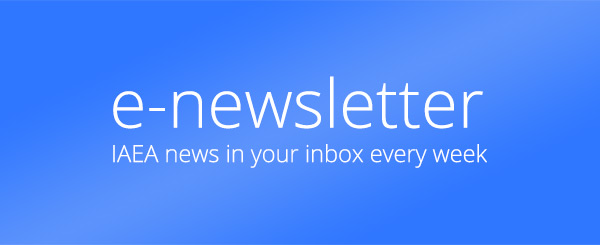Challenges, Gaps and Opportunities for Managing Spent Fuel from Small Modular Reactors
Open for proposals
Project Type
Project Code
T13021CRP
2238Approved Date
Status
Start Date
Expected End Date
Participating Countries
Description
There is an increasing interest in small modular reactors (SMRs) and their applications, in part due to their consideration as a low carbon energy source in the climate change mitigation plans of many Member States. SMRs are newer generation reactors designed to generate electric power typically up to 300 MWe and for non-electrical industrial applications (e.g. district heating, water desalination and heat generation for industrial processes). According to the IAEA Booklet on Advances in SMR Technology Developments, complementary to the ARIS database and published in 2022, there are more than 80 SMR concepts currently under development, spanning a significant range of reactor technologies.
The SMR concepts vary from LWR-SMRs, either land or marine based; high temperature gas cooled reactors (HTGR-SMRs); liquid metal fast reactors (LMFR-SMRs) and molten salt reactors (MSR- SMRs) using different fuel forms (oxide/ceramic, metal, TRISO, liquid fuel salts, etc.) having different technology readiness levels.
While much focus has been given to aspects of SMR deployment such as reactor concepts, engineering, economics, infrastructure, safety and so on, the fuel cycle, and in particular the management of spent fuel, appears to have had limited consideration. As the SMR concepts are becoming more refined, it is an appropriate time to start identifying the challenges, opportunities, gaps, and issues for managing spent fuel from SMR technologies.
The characteristics of the nuclear fuel to be managed as spent (e.g., enrichment, matrix and composition) and its irradiation history (e.g., burnup) impact the different stages of spent fuel management, therefore accommodating the different spent fuels coming from SMRs will require adaptation of all stages of the backend of the fuel cycle already implemented, due to higher thermal outputs, higher criticality risks, different radionuclide inventories, new matrices and cladding behaviours, etc. implying the need for R&D and demonstrations to ensure that the main safety objective is met. Understanding of implications of the management of new spent fuels is important for Member States to make informed decision on the selection of SMR technologies and their associated fuel cycle options.
Objectives
The main overall objectives are to: identify viable nuclear fuel cycle options for the different SMR technologies; to identify generic key parameters/criteria for designing the backend programme of the different fuel cycle options associated with the various SMR technologies; and to identify similarities and/or significant differences among technologies for the backend of the fuel cycle of the various SMR technologies. These materials will allow countries to perform their own analysis for their spent fuel management strategy, according to their specific context, as part of the informed decision making on SMR technology deployment.
Specific objectives
Identification of potential stages for managing spent fuel from SMRs based on LWR technology, identifying nuclear materials, infrastructures and wastes involved.
Identification of potential stages for managing spent fuel from SMRs based on HTGR technology, identifying nuclear materials, infrastructures and wastes involved.
Identification of potential stages for managing spent fuel from SMRs based on Advanced Reactor (FRs and MSRs) technologies, identifying nuclear materials, infrastructures and wastes involved.
Identification of key parameters/criteria that can be used for designing a spent fuel management strategy for a given SMR technology. Particular weights for those criteria will depend on country's context.
Identification of similarities and differences among the backend of the fuel cycle options for the various SMR technologies.
Identification of opportunities, gaps and challenges to move from the current industrially implemented spent fuel management strategies for LWRs' fleet to the spent fuel management strategies envisaged for the different SMR technologies.
Identification of potential collaborative work between CRP partners.
Strengthening the knowledge of MSs with limited experience in the backend of the fuel cycle of nuclear power programmes.
Increase the participation of young professional experts.

